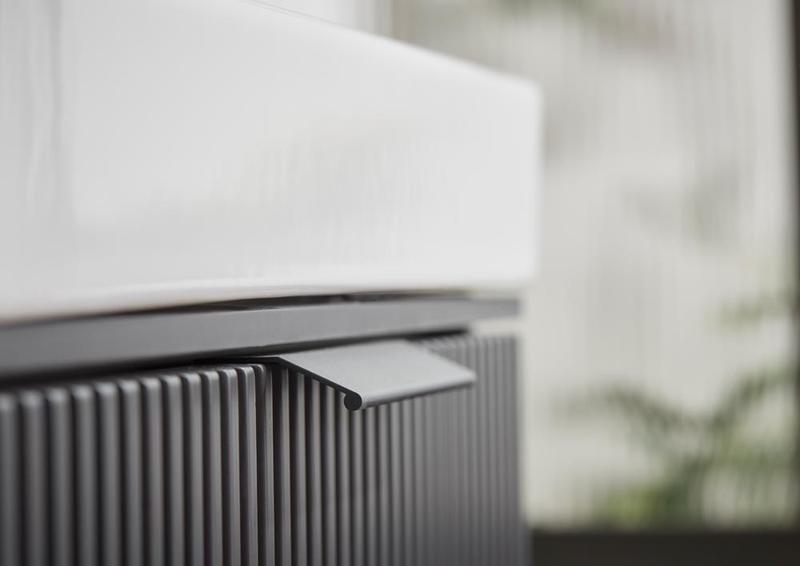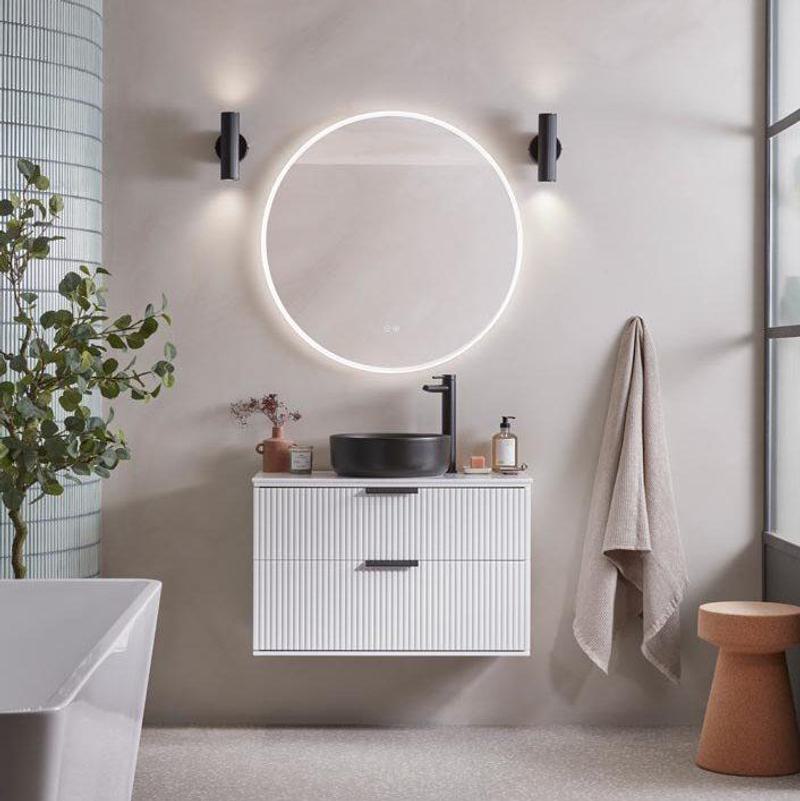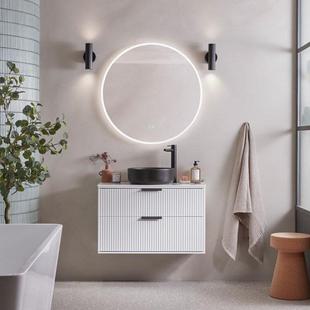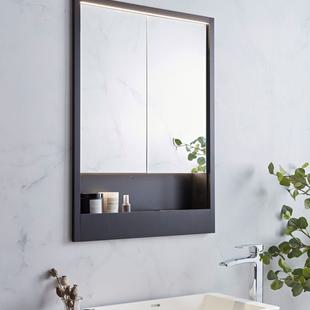- NEW
-
Bathroom Furniture
Bathroom Furniture TypesBathroom Furniture StylesBathroom Furniture Finishes
- Baths
-
Basins & WCs
Basin TypesBasin & WC Styles
-
Taps
TAP TYPESTAP STYLES
- Showers
-
Lighting
Smart Lighting Solutions
-
Mirrors
-
Cabinets
Cabinet TypesCabinet Styles
-
Accessories
Accessory Types
-
Guides & Ideas
InspirationBathroom Style
- NEW
-
Bathroom Furniture
Bathroom Furniture TypesBathroom Furniture StylesBathroom Furniture Finishes
- Baths
-
Basins & WCs
Basin TypesBasin & WC Styles
-
Taps
TAP TYPESTAP STYLES
- Showers
-
Lighting
Smart Lighting Solutions
-
Mirrors
-
Cabinets
Cabinet TypesCabinet Styles
-
Accessories
Accessory Types
-
Guides & Ideas
InspirationBathroom Style
Fluting - The Elegant Interior Trend that Belongs in Your Bathroom
From ribbed glassware to reeded glass shower panels, texture has been a key feature of interior design since 2019. The fluted trend isn't confined to just walls and columns anymore; it's gracing everything from furniture to kitchen cabinetry, bathroom vanities to light fixtures, adding a tactile and visual appeal that's hard to resist. The sculptural lines are simultaneously contemporary and nostalgic, providing an unexpected twist to the design while adding a layer of interest and charm.
Understanding the Fluted Trend
Fluting refers to the series of shallow, vertical grooves, typically seen on architectural columns, furniture surfaces, and decorative elements. It is most commonly seen in fluted glass, reeded glass or ribbed glass designs, but the trend has slowly but surely filtered down to influence all areas of interior design. It's a way of adding depth, detail, and a sense of verticality to flat surfaces, instantly elevating them from simple to intricate.
In modern interior design, fluting is no longer limited to columns and surface details. It's now being used in various innovative ways, such as on cabinet fronts, light fixtures, wall panels, and even glass on doors or partitions. The rhythmical pattern of fluting adds a subtle, textural element to spaces, creating an inviting interplay of light and shadow.



Fluting in Bathroom Design
Likely for reasons of cleanliness, conventional bathroom design often features smooth, sleek surfaces and a minimal use of texture. The beauty of fluting is that it lends interest and depth to the space without the use of textiles or materials generally at odds with bathroom environments. As such, bathrooms are a great space to explore the use of fluting and reeded surfaces - from ribbed glass, to lighting, bathroom vanities and even fluted accessories.
Fluted Glass
Fluted glass, with its vertical ribbing, offers an excellent way to introduce a distinctive, tactile element into your home. It can be used in a variety of applications – from room dividers and shower screens to cabinet fronts and doors. Not only does ribbed glass add a sense of texture and depth to a space, but it also diffuses light beautifully, casting interesting shadows and adding a sense of privacy without blocking light. For instance, in the bathroom, you could opt for a reeded glass shower screen, or incorporate a fluted glass door or windows.
Fluted Wall Panelling
Wall panels can dramatically change the feel of a room, and opting for fluted versions can add an extra touch of sophistication. Fluted wall panels offer a rhythmical visual pattern, giving a sense of depth and texture to any wall. They can be used in virtually any room – from hallways and living rooms to bedrooms and bathrooms. These panels can cover an entire wall for a bold statement, or can be used halfway up a wall, paired with paint or wallpaper above, for a more subtle effect.
Fluted Vanity Units
Fluted vanity units are a fantastic way to embrace this trend in your bathroom or powder room. The vertical lines of the flutes bring a sense of height and elegance to the unit, while also offering a unique texture. These units often become the focal point of the bathroom, so pair with simple, understated tiles and fixtures to let the vanity truly shine. Consider a soft, neutral color for the vanity to keep the attention on the fluted texture.
Fluted Lighting
Lighting fixtures are another brilliant avenue for introducing the fluted trend into your home. A fluted pendant light or table lamp can serve as a striking design element, as the fluted detail not only adds visual interest but also influences the way the light is cast, creating beautiful patterns. Fluted glass sconces can provide a subtle, diffused light that's perfect for creating a warm, inviting atmosphere in spaces like the dining or living room.
Fluted Accessories
If you're hesitant to commit to larger pieces, fluted accessories are a great way to dip your toe into this design trend. Decor items like fluted vases or plant pots, candle holders, or decorative bowls can add a subtle nod to the trend without overwhelming the space. These smaller pieces allow you to update your space with minimal effort and could be just the touch of texture your room needs.
Considerations When Incorporating Fluting
While the fluted trend is undoubtedly stylish, it's important to consider its practicality, especially in a bathroom setting. Fluting can be harder to clean than flat surfaces due to the grooves. Therefore, it's crucial to use it in areas that won't get extremely dirty or are not difficult to clean, like vanity fronts rather than floors.





















